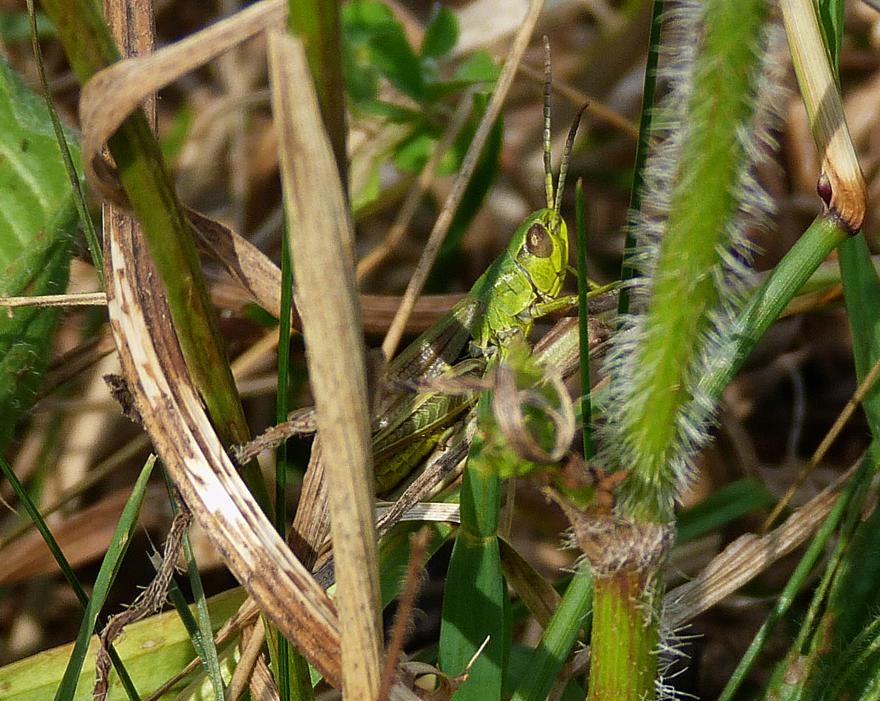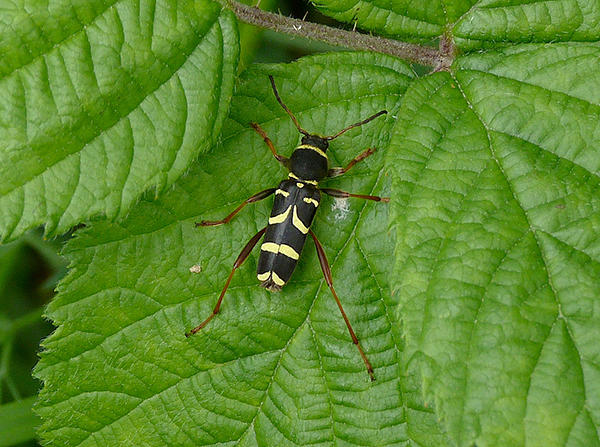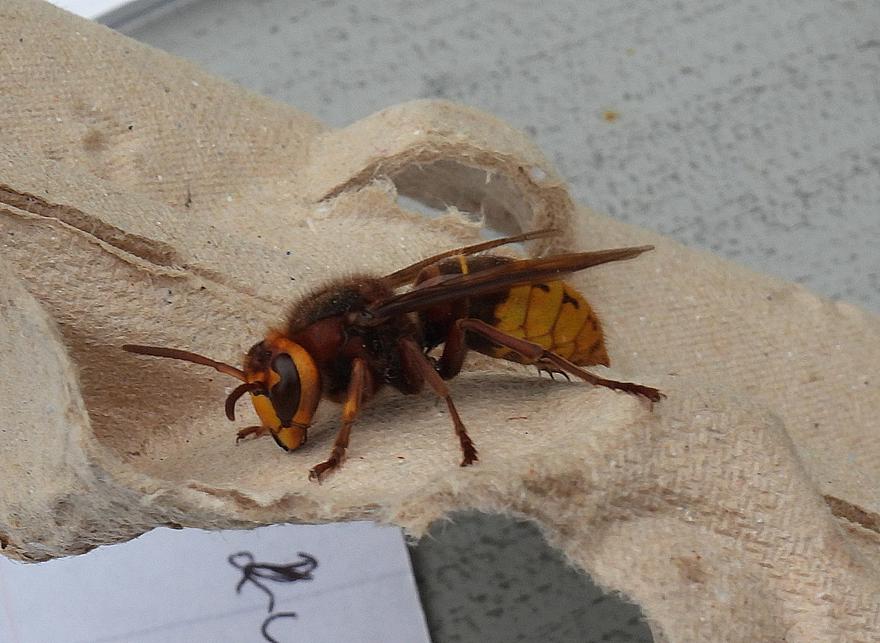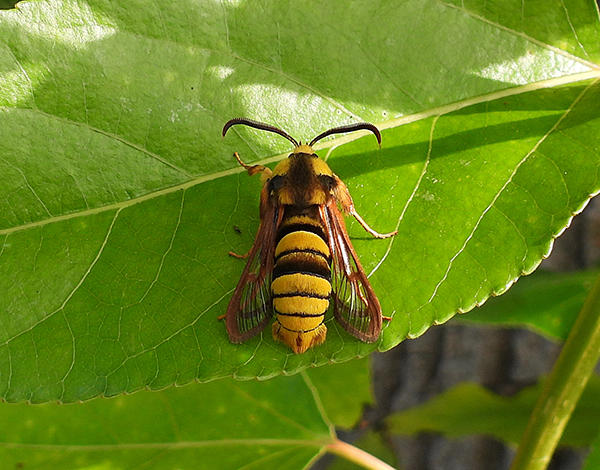Mike Wheeler is the Course Leader in Medical Sciences in the School of Science and the Environment. In this blog he talks about the art of deception in nature, from prey to predator.
 A Meadow Grasshopper
A Meadow Grasshopper
When at every corner there may lurk a predator waiting to devour you, how do you hide? This is the quandary that animals face in nature. For many animals they are on the menu of a large group of predators. Nature ‘red in tooth and claw’ as you may hear it described. So, what measures can you take if you want to avoid being eaten? For many the obvious solution is to blend into the background. You get the gist by looking at the picture of the Grasshopper. Ensure that your colour matches the environment and hope that a predator (likely a bird in this case) misses you as it is foraging. We see this much of the time in nature and it seems the common sense thing to do. However, what do we make of the Wasp Beetle in the photograph below? It’s hardly blending into the background is it. One look at it and you might think ‘I’ll avoid that, it has yellow and black stripes so that means it will sting’. If this is what goes through your mind, you have been outsmarted by a beetle! The Wasp Beetle is in fact entirely harmless.
 A Wasp Beetle
A Wasp Beetle
What a wasp beetle is doing is taking advantage of the fact that yellow and black stipes are seen as a universal warning system because it is used by wasps, bees and other distasteful or venomous creatures to advertise the fact they should not be eaten unless you want to be stung. What the wasps are exhibiting is known as ‘aposematism’ – it means that there are patterns that some species use to advertise their unpalatability to potential predators.
Predators know to avoid these yellow and black stipes, but the Wasp Beetle is palatable. What it is doing is hiding by pretending that it is unpalatable. This is known as Batesian Mimicry, named after Henry Walter Bates, a 19th Century explorer and naturalist.
 A hornet
A hornet
Bates spent time in the Amazon rainforest where he noticed this phenomenon in butterflies whereby certain patterns seemed to be shared between those butterflies that were unpalatable and those that mimic them even though they are perfectly palatable. Luckily we don’t have to visit the Amazon to see this, you can see the phenomenon commonly in your garden (think of hoverflies). How does this phenomenon arise? Darwin came up with a solution on publishing his landmark book ‘On the Origin of Species’ in 1859. What Darwin says is this:
- Firstly, all species show variation, and that variation is inherited
- Secondly, organisms tend to produce more offspring than can survive so there is a struggle for survival and only some will get the chance to reproduce and contribute to the next generation.
- Thirdly, because of this, those variations that endow a greater chance of survival will be propagated in the population and over time a species may change.
 Hornet Clearwing Moth
Hornet Clearwing Moth
So in the case of Batesian mimicry, at some point there is variation such that an individual slightly resembles a venomous creature, because of this it has a slightly improved chance of survival (not being predated) and therefore it will leave more offspring, some of whom may have even better resemblance until we get to the point where we see this wonderful Hornet Clearwing Moth that I photographed on St John’s campus this year.
Hornet Clearwing Moths can be found around May near to Poplar trees (there just happens to be a Poplar behind Woodbury building on St John's Campus). They are completely harmless but closely resemble the shape and warning pattern of a Hornet which of course is venomous (though don’t worry, they won’t bother you if you leave them alone!). Just one of the ways that evolution works to produce the fantastic diversity of life on our planet. So next time you see an insect that has yellow and black stripes be aware that all might not be as it seems.
Find out more about the School of Science and the Environment.